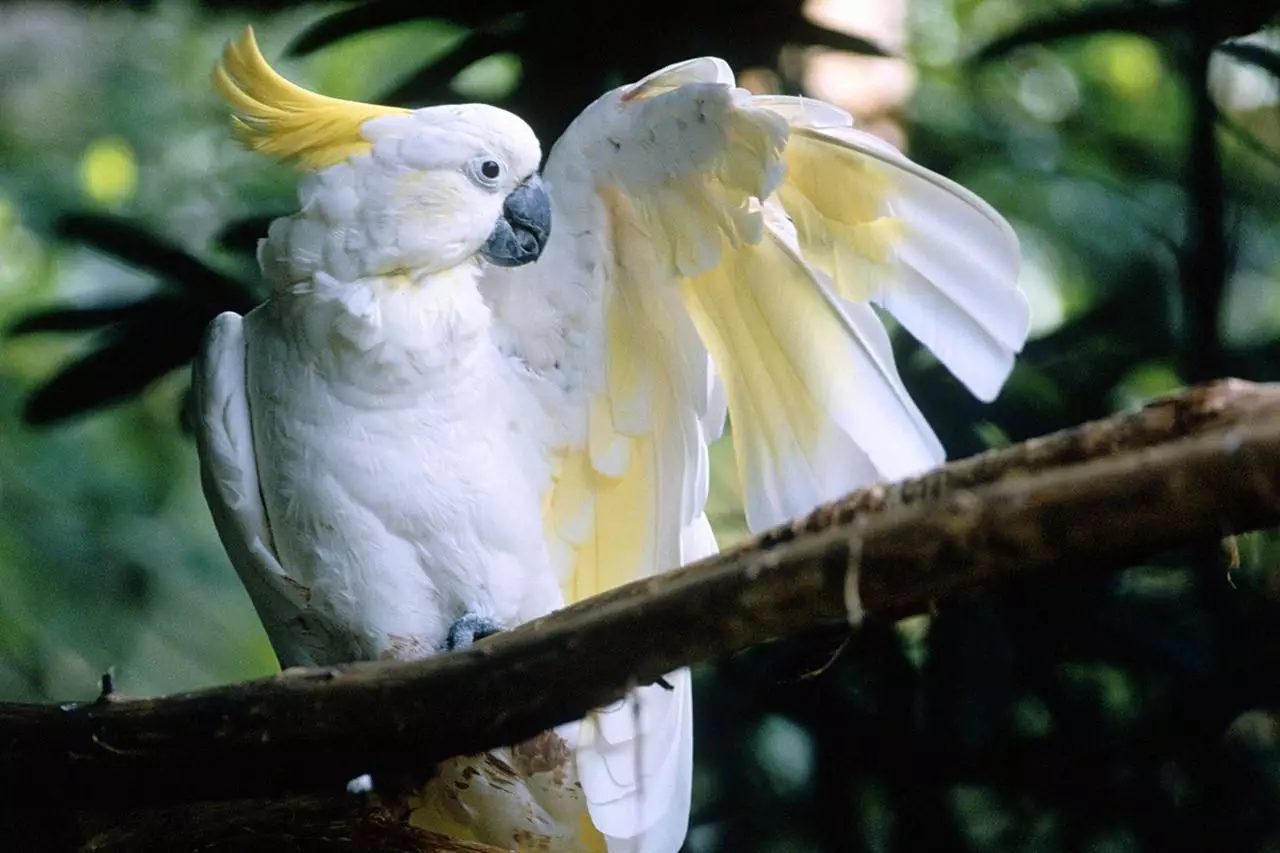The sulphur-crested cockatoo, scientifically known as *Cacatua galerita*, stands out as one of the most captivating birds among the cockatoo family due to its striking appearance and complex personality. While these stunning parrots have garnered attention and admiration, potential owners must be fully aware of the immense commitment required to care for such an intelligent and demanding pet. This article aims to provide a thorough understanding of the sulphur-crested cockatoo, ranging from its habitat to dietary needs and behavioral characteristics.
Characterized by its striking white plumage and the vibrant yellow crest atop its head, the sulphur-crested cockatoo is not only beautiful but also one of the largest members of its family. The typical adult ranges around 20 inches in length, weighing nearly two pounds. In terms of subspecies, four distinct variations exist, each hailing from specific geographic regions:
– Cacatua galerita triton: Also known as the Triton cockatoo, this subspecies is native to New Guinea and its adjacent islands.
– C. g. eleonora: Known as the Eleonora cockatoo, this variant can be found in several eastern Indonesian islands.
– C. g. fitzroyi: The Mathews cockatoo resides in northern Australia.
– C. g. galerita: This is regarded as the standard sulphur-crested cockatoo and is predominantly found in eastern Australia.
Although the sexes of the birds appear similar, discerning owners can differentiate between males and females upon maturity—males possess darker-colored eyes compared to the reddish-brown eyes of females.
In the wild, sulphur-crested cockatoos thrive in tropical and subtropical environments, largely inhabiting the edges of rainforests. Their adaptability allows them to live in urban areas, where they often become a common yet sometimes bothersome sight. Due to their abundance in certain regions, they are at times labeled as nuisances by locals.
Importantly, legislation such as the Wild Bird Conservation Act restricts the import of sulphur-crested cockatoos into the United States, making captive breeding the primary source for pet owners. This ensures that owners are getting birds that are used to human interaction and domestic living.
One of the most intriguing aspects of sulphur-crested cockatoos is their emotional depth and intellectual prowess. Recognized as one of the most intelligent parrot species, they exhibit cognitive abilities on par with a 1- to 2-year-old child. This intelligence necessitates an owner’s commitment to socialization and training.
These birds are notably affectionate and enjoy interaction; however, they also require periods of independence to foster self-sufficiency. If left neglected, sulphur-crested cockatoos can exhibit destructive behaviors and even engage in self-harm. Their vocalizations can be a challenge, as they possess a loud and piercing shriek—qualities that potential owners must consider, especially those living in close quarters.
Maintaining the health of a sulphur-crested cockatoo involves careful attention to diet. In their natural setting, these birds consume seeds, grains, insects, and fruits. A balanced diet in captivity should comprise high-quality pellets, fresh fruits, and vegetables, ideally with pellets making up about 75% of their intake. The remaining 25% should consist of fresh produce to ensure optimum health.
Owners must remain vigilant about their cockatoo’s nutrition, as an improper diet can lead to significant health issues. Common ailments include obesity and feather-plucking—a sign of stress or lack of stimulation. Moreover, these birds are susceptible to viral conditions such as psittacine beak and feather disease (PBFD), emphasizing the importance of routine veterinary care and proactive health management.
The living environment of a sulphur-crested cockatoo is crucial for its overall well-being. A spacious cage is essential, with dimensions of at least 40 inches by 40 inches and a height of at least 5 feet being recommended. To promote physical and mental health, these energetic birds require several hours of out-of-cage time every day for flight, exploration, and play.
Interactive toys and climbing apparatus are essential to keep cockatoos engaged and to mitigate destructive tendencies. However, they possess strong beaks capable of damaging typical household items, thus careful selection of durable and safe toys is necessary.
Owning a sulphur-crested cockatoo demands an exceptional level of dedication and responsibility. Their intelligence, emotional needs, noise levels, and dietary requirements all contribute to the complexity of their care. For those considering welcoming one of these magnificent birds into their lives, thorough research, and preparation are vital to ensure both the owner and the pet can thrive in harmony. With proper care and attention, a sulphur-crested cockatoo can indeed be a lifelong companion, filled with personality and charm.

